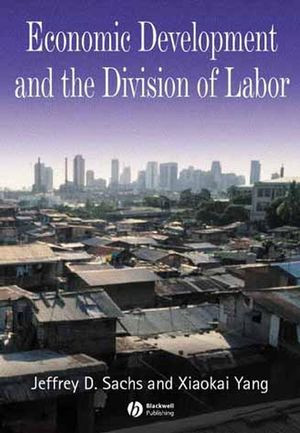Economic Development And The Division Of Labor Xiaokai Yang Jeffrey D Sachs by Xiaokai Yang, Jeffrey D. Sachs 9780470752036, 9780631220039, 0470752033, 0631220038 instant download after payment.
This innovative new text from Jeffrey Sachs and Xiokai Yang introduces students to development economics from the perspectives of inframarginal analysis and marginal analysis. The book demonstrates how the new-found emphasis on inframarginal analysis has influenced a shift back to an interest in Classical Economics from Neoclassical Economics.
- Inframarginal Analysis vs. Marginal Analysis is presented as a consistent theoretical framework throughout.
- Shows how the relationship of Inframarginal Analysis to Marginal Analysis has influenced the shift back to an interest in Classical Economics from Neoclassical Economics with regard to economic development.
- Allows economists to reduce their overall reliance on marginal analysis, which may be less relevant to development economics than it is to the economics of development countries.
- Brings considerable analytic machinery to bear on important problems.
- A focus on institutions and transaction costs that is very relevant to development economics.
- Offers a thorough analysis of trade (CHs. 3 - 7) and macroeconomics (CHs. 16 - 19), both of which are not dealth with in depth by comparable textbooks.
Content:
Chapter 1 Introduction (pages 1–33):
Chapter 2 Geography and Economic Development (pages 34–56):
Chapter 3 Driving Force I ? Exogenous Comparative Advantage and Trading Efficiency (pages 57–97):
Chapter 4 Driving Force II ? Endogenous Comparative Advantage and Trading Efficiency (pages 98–130):
Chapter 5 Driving Force III ? Economies of Scale and Trading Efficiency (pages 131–156):
Chapter 6 Coexistence of Endogenous and Exogenous Comparative Advantages and Patterns of Development and Trade (pages 157–192):
Chapter 7 Structural Changes, Trade, and Economic Development (pages 193–225):
Chapter 8 Economic Development, the Institution of the Firm, and Entrepreneurship (pages 227–253):
Chapter 9 Endogenous Transaction Costs, Contracts, and Economic Development (pages 254–301):
Chapter 10 Transaction Risk, Property Rights, Insurance, and Economic Development (pages 302–338):
Chapter 11 Urbanization, Structural Duality Between Urban and Rural Areas, and Economic Development (pages 339–369):
Chapter 12 Industrialization, Structural Changes, Economic Development, and Division of Labor in Roundabout Production (pages 370–398):
Chapter 13 Neoclassical Models of Economic Growth (pages 399–420):
Chapter 14 Economic Development Generated by Endogenous Evolution of Division of Labor (pages 421–448):
Chapter 15 Social Experiments and the Evolution of Knowledge of Development (pages 449–471):
Chapter 16 Investment, Saving, and Economic Development (pages 473–497):
Chapter 17 Money, Division of Labor, and Economic Development (pages 498–512):
Chapter 18 Endogenous Business Cycles, Cyclical Unemployment, and Endogenous Long?Run Growth (pages 513–543):
Chapter 19 Economic Transition (pages 544–585):


